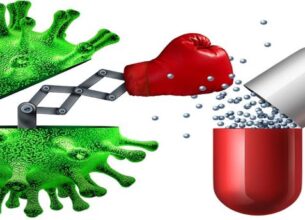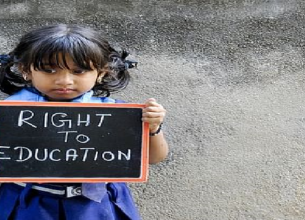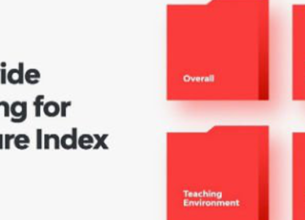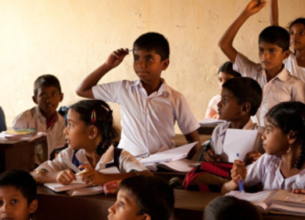THE STRUCTURAL FLAWS IN INDIA’S HIGHER EDUCATION SYSTEM
06, Dec 2019

Prelims level : Governance - Policies
Mains level : GS-II Issues Relating to development and Management of Social Sector/Services relating to Education
Why in News?
- Recently, fee hike in JNU has raised a debate regarding the quality of higher education in India and the kind of support the government is giving to our students. In this context, we need to take a look into the problems that clog the higher education system in India.
Issues and Challenges:
1. Low Enrolment Ratio:
- According to All India Survey on Higher Education, the gross enrolment ratio in higher education is 25.2% in 2016-17 compared to 44% of China and 85% in US. This shows lack of access to higher education institutions.
2. Shortage of faculty
- Faculty vacancies at government institutions are at 50% on average and the teacher-student ratio is now 1:20. The problem lies in increased demand, and stagnant supply.
- A Deloitte gathering of 63 Deans of top-tier institutions revealed that 80% of those listed lack of quality faculty.
3. Quality standards:
- About 94% of students of higher education study in 369 State universities.
- In 2012 only 106 State universities and 4,684 colleges were accredited by NAAC.
4. Underfunding:
- The number of institutions has surged in India since the 2000s, while the number of students doing PhD has remained constant.
- Meanwhile, there are over a 1,00,000 India-born PhDs in universities around the world, who are kept away from India due to paltry salaries and poor funding.
- It has to be noted that China has solved this problem by attracting Chinese-origin PhDs back home with dollar salaries and monetary incentives for published research.
5.Complexity in Regulation
- The heavy hands of multiple regulators (like the UGC and All India Council for Technical Education), together with the empowerment of professional bodies (like the Bar Council of India and Council of Architecture) have not yielded the desired dividends.
6. Inadequate infrastructure
- Most of the funding from the Central government is skewed towards Central universities, IITs and IIMs.
- 150 Centrally-funded institutions get most of funding by the Ministry of Human Resource Development (MHRD).
7. Lack of Industry connect
- Indian universities persist in separating research and teaching activities, depriving students of exposure to cutting-edge ideas.
- Monetary incentives for academia are practically non-existent, and Indian R&D expenditure at 0.62% of GDP is one of the lowest in emerging economies.
- It is not surprising, then, that Indian universities rank low in both research and teaching.
- According to India Skills Report only 47% of the Indian graduates are considered employable.
Impact of such an Issue:
- These structural flaws in the Indian higher educational institutions could affect macroeconomic indicators such as labour productivity.
- Labour Productivity:
- Output obtained from each employee
- Determined mainly by
1. Innovation
2. Human Capital
Suggestion to improve Labour Productivity:

Government Interventions in this Aspect:
1. Rashtriya Uchchatar Shiksha Abhiyan (RUSA)
- To address the funding concerns of State institutions, the MHRD in 2013 has launched RUSA scheme.
- RUSA provides strategic funding to eligible State higher educational institutions.
- The scheme is performance-based in that the funding is linked to reforms in the key areas of governance, learning-teaching outcomes, enrolment and infrastructure support.
2. Education Quality Upgradation and Inclusion Programme(EQUIP)
- It is an ambitious programme to improve Access and Quality in Higher Education over next 5 years.
- It provides for funding through HEFA that will raise Rs 1 Lakh crore for infrastructure improvement.
3.Higher Education Commission of India (Repeal of University Grants Commission Act) Bill 2018:
- The Bill seeks to repeal UGC Act and provides for setting up of Higher Education Commission of India (HECI) to replace the UGC.
- Separation of academic functions and grants thereby promoting autonomy.
- The new commission will cover all fields of education (except medical) and institutions set up under the Central and State Acts excluding those of national importance).
4. Scheme for Promotion of Academic and Research Collaboration (SPARC)
- Launched in 2018
- Primarily aims at improving the research ecosystem of India’s Higher Educational Institutions.
5. Institutions of Eminence programme
- The above efforts have been coupled with an ‘Institutions of Eminence’ programme started in 2018 that gave increased funding to some research universities.
Way Forward:
- The Draft National Education Policy, 2019 has recommended for:
1. Increase GER to at least 50% by 2035.
2. Establishment of National research foundation to improve R&D.
3. Restructure of Higher Education Institutions into following Tiers:
- Tier 1: Research and teaching
- Tier 2 : Professional courses
- Tier 3 : Liberal Arts
- The government needs to recognise the systemic anger at play, and ensure that higher education’s role in innovation and human capital is not ignored.
- The Draft National Education Policy, 2019 is a great first-step, but the reforms must be pushed through and must lead to legislation that will fund research-based universities.
- Only this can bring a culture of discovery and accountability to India’s higher education institutions.
















